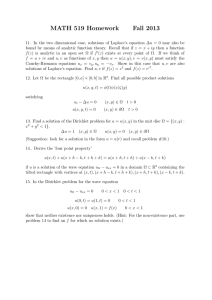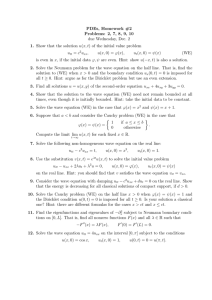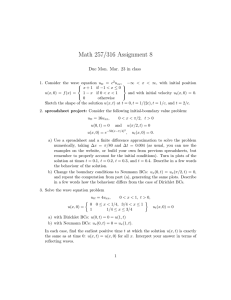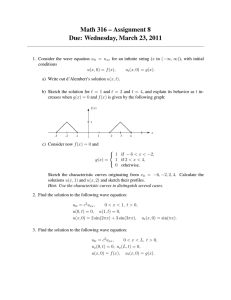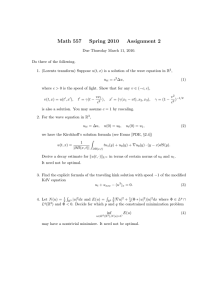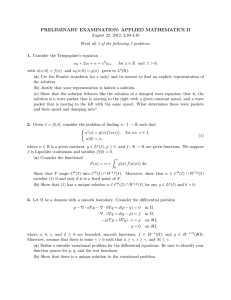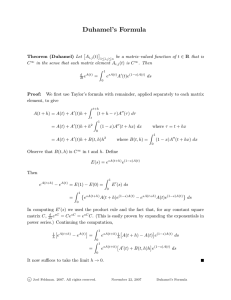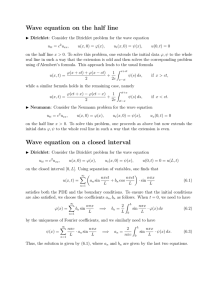Wave equation: remaining facts
advertisement
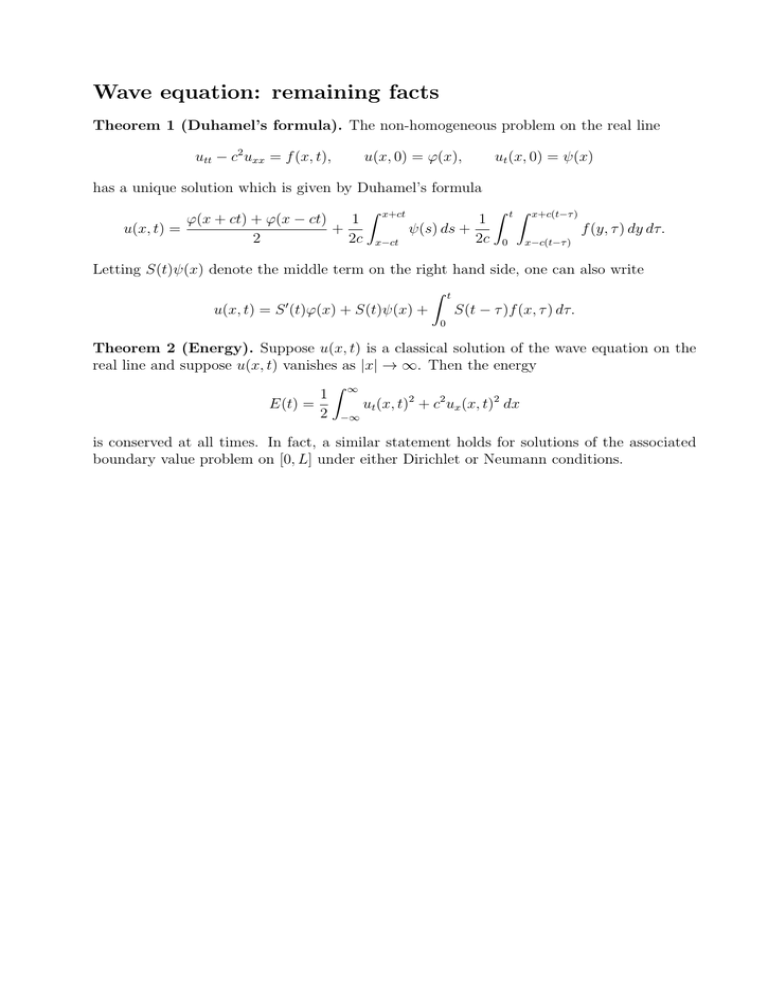
Wave equation: remaining facts Theorem 1 (Duhamel’s formula). The non-homogeneous problem on the real line utt − c2 uxx = f (x, t), u(x, 0) = φ(x), ut (x, 0) = ψ(x) has a unique solution which is given by Duhamel’s formula φ(x + ct) + φ(x − ct) 1 + u(x, t) = 2 2c ∫ x+ct x−ct 1 ψ(s) ds + 2c ∫ t∫ x+c(t−τ ) f (y, τ ) dy dτ. 0 x−c(t−τ ) Letting S(t)ψ(x) denote the middle term on the right hand side, one can also write ∫ t ′ u(x, t) = S (t)φ(x) + S(t)ψ(x) + S(t − τ )f (x, τ ) dτ. 0 Theorem 2 (Energy). Suppose u(x, t) is a classical solution of the wave equation on the real line and suppose u(x, t) vanishes as |x| → ∞. Then the energy ∫ 1 ∞ E(t) = ut (x, t)2 + c2 ux (x, t)2 dx 2 −∞ is conserved at all times. In fact, a similar statement holds for solutions of the associated boundary value problem on [0, L] under either Dirichlet or Neumann conditions.
